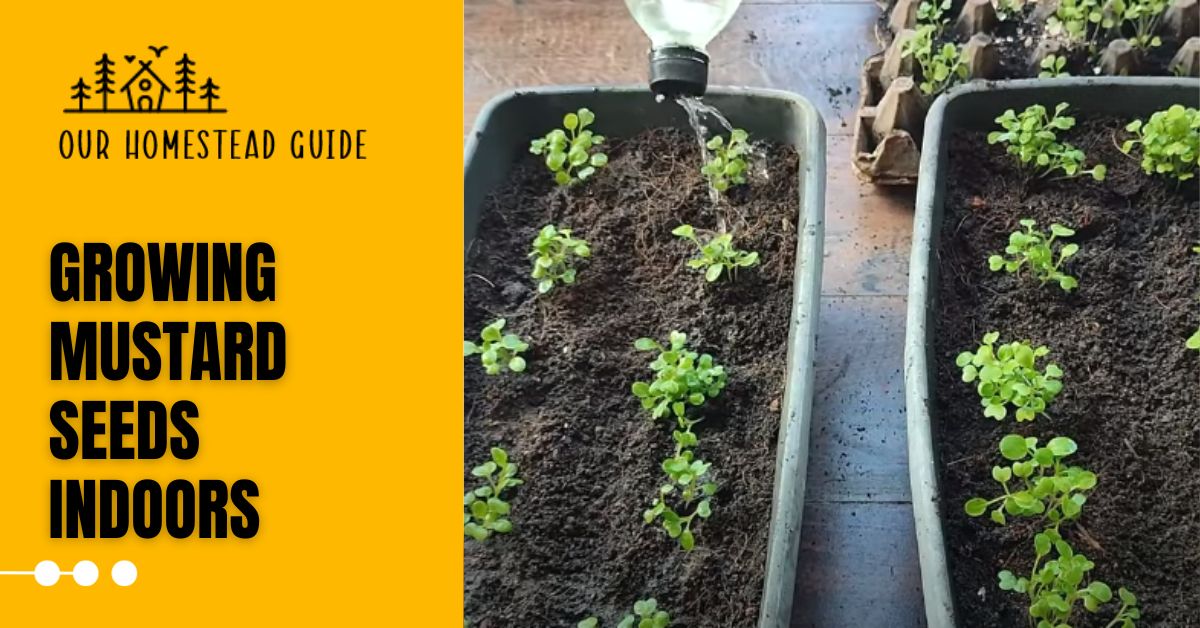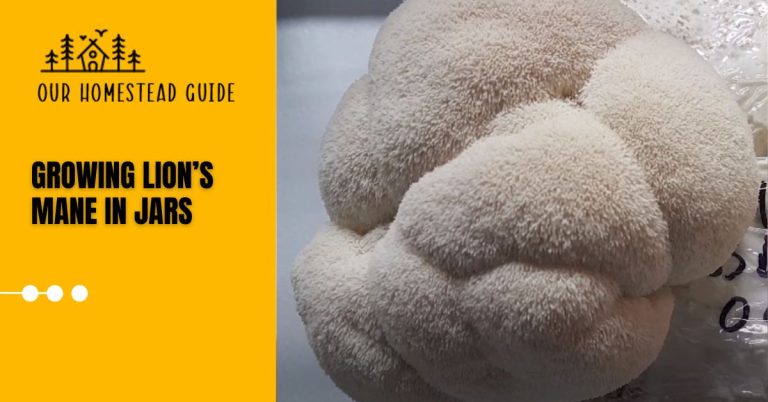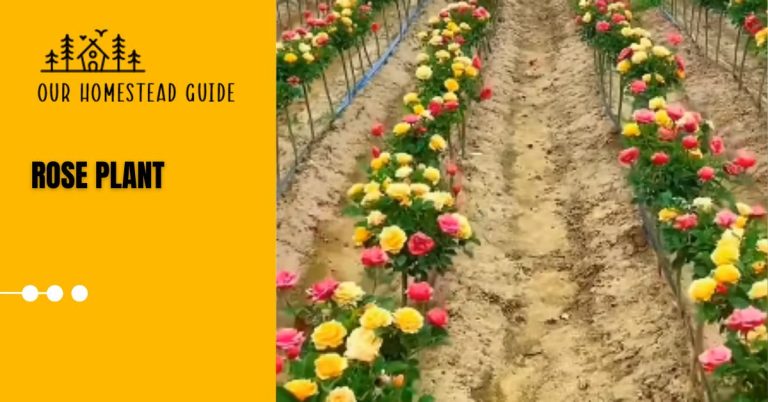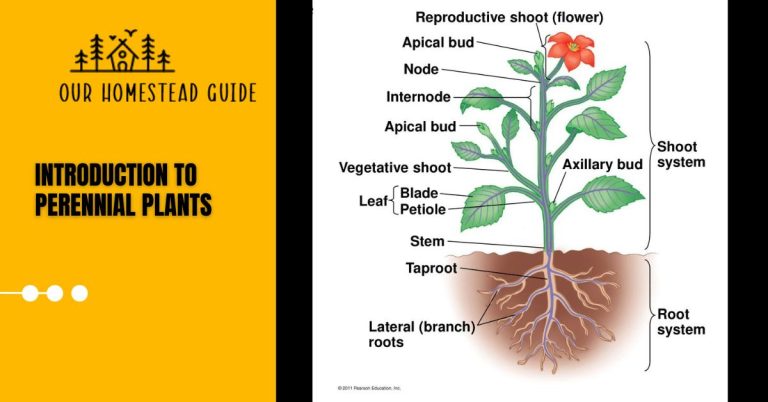7 Tips Plant and Care Growing Mustard Seeds Indoors: Step by Step
Growing Mustard Seeds Indoors Indoor mustard seed cultivation produces fresh, pungent mustard greens all year. Regardless of your gardening expertise, you can produce mature greens and nutrient-rich microgreens in the comfort of your own home with simple instructions. It’s a lovely addition to your home gardening possibilities.
How To Grow Mustard Seeds Indoors?
1. Prepare the Soil
Start by creating the ideal soil mixture for your mustard greens in order to ensure their healthy and robust growth. Loose, nutrient-rich, and well-draining soil is preferred for mustard greens. What you should do is:
Compost, vermiculite, and perlite may all be added to your soil to improve its texture and nutritional content for growing mustard greens. Growing Mustard Seeds Indoors This mixture will increase drainage, aeration, and critical nutrients for the greens, fostering healthy development and a plentiful harvest.
2. Select and Plant Mustard Seeds
It’s crucial to get the same sort of mustard seeds frequently used for manufacturing mustard sauce while growing mustard greens. The spacing of your seeds will depend on whether you want to develop them fully mature or as microgreens.
Mature Mustard Greens: If you want to develop mustard greens to full maturity, sow the seeds in rows or in a grid pattern, spacing them 6 to 8 inches apart, about 1/2 inch deep. Growing Mustard Seeds Indoors The mature plants have enough room to establish themselves and grow huge leaves at this spacing.
Microgreen mustard: To grow mustard greens as microgreens, scatter the seeds thinly across the top of a shallow container or tray that has been filled with potting soil. Keep them fairly close together, with a distance of about 1/4 and 1/2 inch. Growing Mustard Seeds Indoors Within a few weeks of seeding, microgreens are commonly picked when they reach a height of 1-2 inches.
For Full Maturity (12-18 inches apart):
Lightly scatter the seeds over the ready soil for full maturity (12–18 inches apart).
Growing Mustard Seeds Indoors Apply a little layer of dirt over them. Be cautious not to bury mustard seeds too deeply because they are so small.
For Microgreens:
Plant the seeds for microgreens more closely together because you’ll be collecting them at a younger stage. Growing Mustard Seeds Indoors Thin them out afterwards to the right spacing.
3. Ideal Growing Conditions
Mustard greens thrive when they receive the right conditions. Follow these guidelines:
1-Provide full sun for your mustard greens, as they love plenty of sunlight. However, they can still grow in partial shade.
The full sun is ideal for mustard greens because they really love lots of light. They are a versatile option for a variety of growing circumstances because they may still manage to thrive in partial shade. While full exposure is optimum for strong development and leaf production, mustard greens may adapt and provide respectable yields in areas with little sunshine, possibly with somewhat slower growth rates.
For thriving mustard greens, maintain even soil moisture without waterlogging; utilize a timer-equipped irrigation system for consistency.
Use a timed watering system to keep the soil consistently wet to promote robust mustard greens. Particularly in hot, dry weather or when daily monitoring is not feasible, this automatic system minimizes overwatering or underwatering. Growing Mustard Seeds Indoors For the best hydration, alter the timer’s settings in accordance with the climate where you are.
In areas where light frost is prevalent, mustard greens are more flavorful and resistant to frost; if heavy frost is more frequent, try sowing seeds in the early spring.
4. Harvesting Mustard Greens
When your mustard greens are fully grown, you may begin collecting them. Take these actions:
This selective method allows the other leaves to continue growing for future harvests and assures a consistent supply of fresh mustard greens. Growing Mustard Seeds Indoors Focus on the individual leaves situated near the base of the plant since they tend to be the biggest and most sensitive.
To minimize stress on the plant’s roots during harvest, use sharp garden shears to make precise cuts near to the plant’s base. Growing Mustard Seeds Indoors This cautious method fosters the plant’s development and health so that it will continue to provide fruit in the future.
5. Companion Plants
There are a number of companion plants that are suitable with mustard greens, which can promote their growth and ward against pests. Growing Mustard Seeds Indoors Think about growing these companion plants:
- Rosemary
- Thyme
- Beets
- Celery
- Carrots
- Lettuce
- Onions
- Dill
- Fennel
- Tansy
- Yarrow
- Mint
- Corn
- Peas
- Buckwheat
- Cucumber
6. Pest Management and Crop Rotation
Caterpillars are a frequent pest of mustard greens, and identifying them requires vigilance. By luring parasitic wasps to your garden, you may organically manage them while preserving a healthy crop and reducing caterpillar numbers.
To reduce the likelihood that your crop of mustard greens may contract illnesses like powdery mildew, it is crucial to follow the suggested planting spacing. Growing Mustard Seeds Indoors Better air circulation and a decreased risk of disease development are made possible by proper spacing, resulting in plants that are stronger and healthier.
Rotate your crops to maintain soil richness and deter pests. Growing Mustard Seeds Indoors For healthier and more fruitful harvests, rotate your mustard greens to new locations each season to lower the risk of soil erosion and insect infestations.
7. Consider Seed Production
Be ready for tall plants that generate a lot of seeds if you intend to let your mustard greens go to seed. To avoid congestion in your garden bed, additional support could be required.
Greens from mustard plants provide a fruitful addition to your home garden. They are a delicious option whether you eat them as microgreens or adult greens due to their peppery flavor and nutritional worth. Growing Mustard Seeds Indoors You can cultivate mustard greens indoors and take advantage of their freshness in your favorite meals with the right care and attention to detail.
Serving Ideas with Mustard Greens:
Information Table
| Topic | Information |
| Container Selection | Choose a container with good drainage, a few inches deep. |
| Lighting Requirements | Provide 4-6 hours of indirect sunlight or use grow lights. |
| Soil Type | Use well-draining potting mix with a pH of 6.0-7.0. |
| Watering | Keep soil consistently moist, but avoid waterlogging. |
| Germination Time | Mustard seeds typically sprout in 4-7 days. |
| Harvesting | Begin harvesting in 4-6 weeks, picking outer leaves. |
| Pest and Disease Management | Watch for aphids, cabbage loopers, and mildew diseases. |
| Temperature Range | Mustard greens prefer cooler temperatures. |
| Pruning for Bushier Growth | Pinch or prune tips to encourage branching. |
| Year-round Growth | Can be grown indoors year-round with proper care. |
Because of their adaptability, mustard greens may be utilized in a variety of dishes. the following serving suggestions:
Salads: Growing Mustard Seeds Indoors To give your salad mix a peppery taste and more nutrients, add mustard greens.
Stir-Fries: For a tasty side dish, stir-fry mustard greens with garlic and ginger.
Smoothies: Growing Mustard Seeds Indoors For a healthy boost, add young mustard greens to green smoothies.
Greens Sautéd: For a quick and excellent side dish, sauté mustard greens in olive oil with garlic and red pepper flakes.
Soups: Growing Mustard Seeds Indoors For more flavor and texture in soups and stews, add chopped mustard greens.
Because of their adaptability, mustard greens may be utilized in a variety of dishes. the following serving suggestions:
Salads: To give your salad mix a peppery taste and more nutrients, add mustard greens.
Stir-Fries: For a tasty side dish, stir-fry mustard greens with garlic and ginger.
Smoothies: Growing Mustard Seeds Indoors For a healthy boost, add young mustard greens to green smoothies.
Greens Sautéd: For a quick and excellent side dish, sauté mustard greens in olive oil with garlic and red pepper flakes.
For more flavor and texture in soups and stews, add chopped mustard greens.
Mustard Seeds Nutrition Facts
There are several health advantages to eating mustard seeds since they are full of vital nutrients. Approximately 11 grams or 1 tablespoon of mustard seeds contains the following nutritional information:
- Calories: 53
- Total Fat: 3.3 grams
- Saturated Fat: 0.2 grams
- Polyunsaturated Fat: 1.7 grams
- Monounsaturated Fat: 1.2 grams
- Sodium: 3 milligrams
- Total Carbohydrates: 4 grams
- Dietary Fiber: 2.7 grams
- Sugars: 0.2 grams
- Protein: 2.7 grams
- Vitamins and Minerals (approximate percentages of daily recommended intake):
- Calcium: 9%
- Iron: 7%
- Magnesium: 9%
- Phosphorus: 6%
- Potassium: 2%
- Vitamin C: 2%
- Folate: 5%
Particularly for its high levels of protein, dietary fiber, and good fats, mustard seeds are well-known. Growing Mustard Seeds Indoors An excellent source of calcium, iron, magnesium, and phosphorus, among other vitamins and minerals, they are also.
Additionally, glucosinolates and other substances found in mustard seeds, including antioxidants, are thought to offer potential health advantages, including anti-inflammatory and anticancer characteristics. You may increase the flavor and nutritional content of your dishes by including mustard seeds in your diet.
Conclusion:
It is possible to grow mustard seeds inside in a variety of temperatures and countries, and the procedure is pleasant and simple. Growing Mustard Seeds Indoors You may enjoy fresh mustard greens for salads, cooking, or even experimenting with your own mustard concoctions by following this thorough approach.
Most Frequently Asked Questions!
1- Can I grow mustard seeds indoors year-round?
Although mustard seeds may be cultivated year-round indoors, they perform best when planted in chilly climates. Growing Mustard Seeds Indoors Consider growing them during cooler months or in a controlled setting with appropriate temperature and light conditions to minimize bolting (going to seed early).
2- What type of container is best for growing mustard seeds indoors?
Consider a small planter or a seed tray as a suitable container with sufficient drainage. For root growth, make sure it’s at least a couple of inches deep.
3- Do mustard seeds need full sunlight indoors?
Although mustard greens may grow in little shade, they prefer full sunshine. Put them in a spot with at least 4-6 hours of indirect sunlight each day, or use additional grow lights if there is insufficient natural light.
4- How often should I water indoor mustard seeds?
Maintain regular moisture in the soil while avoiding waterlogging. When you can touch the top inch of dirt, it’s time to water. To stop root rot and collect extra water, place a saucer under the container.
5- What type of soil should I use for indoor mustard seeds?
Use potting soil that is well-draining and contains organic materials, such as compost. With a pH of between 6.0 and 7.0, mustard greens are slightly acidic to neutral soil.
6- How long does it take for indoor mustard seeds to sprout?
Usually, mustard seeds germinate 4 to 7 days after being planted. However, depending on the temperature and other growing factors, growth rates might change.
7- When can I start harvesting mustard greens grown indoors?
Once the leaves have grown to an acceptable size, which normally takes 4-6 weeks following planting, you may begin picking individual leaves. Harvest the outer leaves and leave the inner ones unharvested so they can continue to grow.
8- What common pests and diseases affect indoor mustard greens?
Aphids, cabbage loopers, and flea beetles are examples of typical pests. Be cautious of ailments like downy and powdery mildew. It is crucial to conduct regular inspections and use effective pest management techniques.
9- Can I regrow mustard greens from store-bought greens indoors?
Yes, mustard greens can be grown again from store-bought ones. Simply leave the base of the greens intact and trim them to a height of approximately 2 inches above the soil to continue caring for them indoors.
10- How do I encourage bushier growth in my indoor mustard greens?
When your mustard greens are about 4-6 inches tall, pinch or cut the developing tips to promote bushier growth. This will encourage branching and make the plant grow more fully.
you may also like this article.





